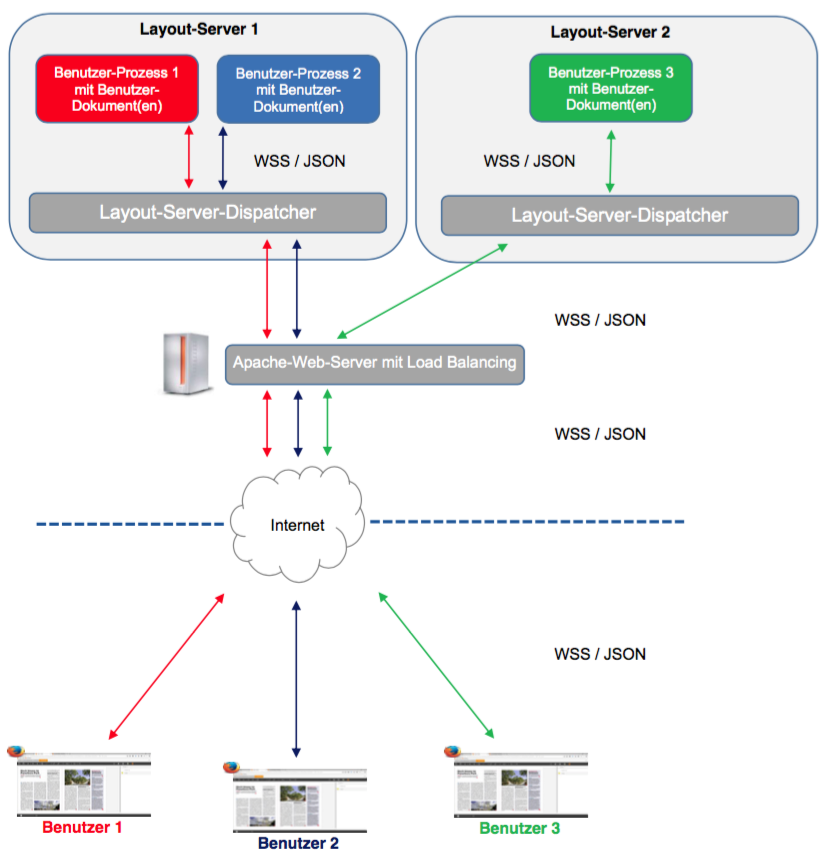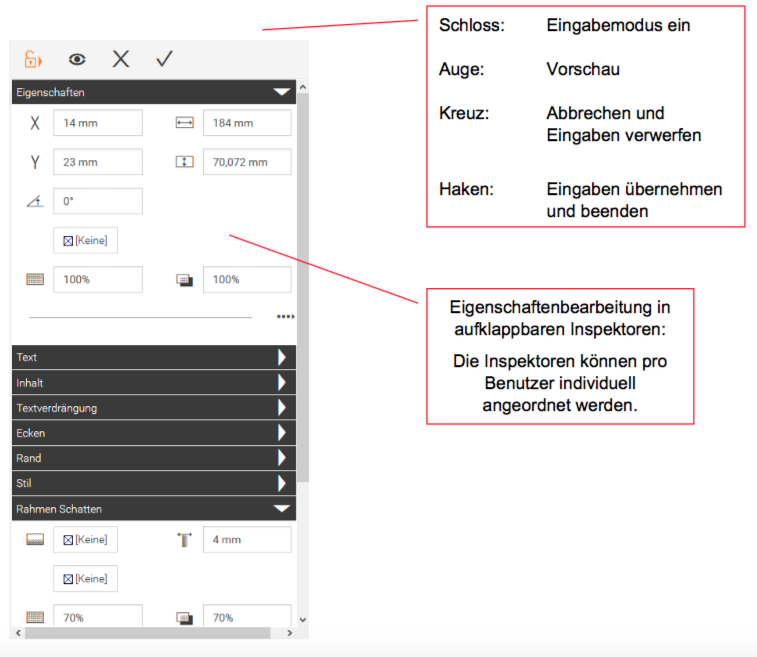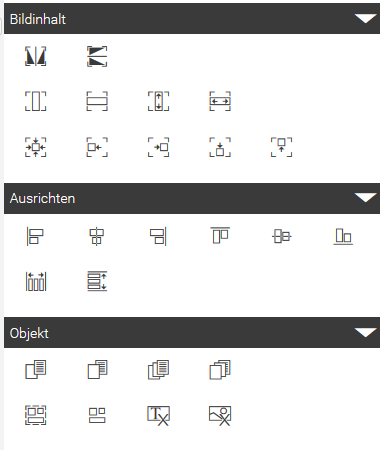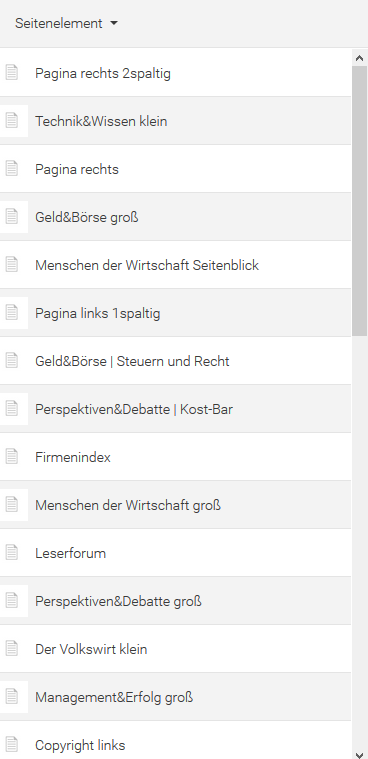MarkStein Web-Layout is a browser based application for creating, editing and outputting page layouts. The module works frame-oriented in the manner of classic DTP programs and is compatible with MarkStein Publisher. Page elements such as frames, texts and images can be modified on the desktop by mouse actions or keyboard entries. MarkStein Web-Layout can be used in conjunction with MarkStein Publishing Server as a web frontend for interactive layout editing.
User Interface
The user interface essentially resembles the familiar interfaces of DTP programs. The appearance and symbols are oriented to common apps, so that the software can also be used on tablets with a touch screen. In addition to the standard tools and layout palette, the grouped inspectors in particular simplify the work, as all important functions of the software can be accessed via them. Less common functions can be found in context menus.
Technical Information
The MarkStein Web-Layout module is a browser-based user interface for loading, manipulating, visualizing, outputting and saving a server-side loaded page layout document. The user interface is implemented in JavaScript on the client side and is bidirectionally connected to the MarkStein Publishing Server via a web server using WebSocket technology. JSON is used as the data format for the exchange between the layout server and the browser.

WYSIWYG-Layout-Prview, Fonts
A WYSIWYG layout view is displayed in the browser. To do this, the server renders the frames or frame groups on the page in SVG format and sends them with their coordinates to the client for display. This means that the view can be scaled within a certain range without loss of quality.
The basis for text rendering in SVG format are the original fonts. These must be available in OTF or TTF format on the layout servers for rendering and on the web server for displaying the SVG data.
MarkStein Publishing-Server
Multi-Instance-Betrieb, Dispatching, Load Balancing
The layout server runs in multi-instance mode. The layout server dispatcher module is responsible for administration. The layout server dispatcher runs as a service. It starts an instance of the layout server when a user logs on; it ends the instance when the user logs off again.
Any number of servers with layout server dispatcher modules can be used for load balancing. The load balancing function of the Apache Web server distributes the requests.
User, Session, Process Management
An authentication instance (MarkStein database or own instance) is required, against which the user must authenticate when logging on.
A persistent session ID is generated for the user, which is used to assign the user to his or her respective user process.
This assignment enables the user to be reconnected to his session after a connection termination.
When the user logs off, the user process is terminated and the session ID expires. The logoff can be performed explicitly by the user or automatically by the system if the user is inactive (period configurable).
Integrated OEM Components
Adobe PDF Library (PDF Processing), Adobe Normalizer (PDF Generation), Duden Proof Factory (Spell Checking), Dieckmann Hyphenation (German / English), Duden Hyphenation (French / Spanish / Italian)
Support of other languages on request.
Technology
Browser-Client: JavaScript, AngularJS, AJAX, TypeScript
Web-Server: Apache, PHP
Layout-Server: C++ with Qt 5,5
MarkStein SOAP-Server: C++ with gSOAP
Supported File Formats
Document
MarkStein Publisher Document, tango XML, InDesign IDML, Connection to tango database
Text
MarkStein Publisher, tango, InDesign-Tagged-Text, XPress Tags, Word, Excel, RTF, HTML, XML
Image
EPS, PDF, AI, PSD, TIFF, JPEG, PNG, BMP
Output
PostScript, PDF, IDML, EPS, TIFF, JPEG, PNG, EPUB.





